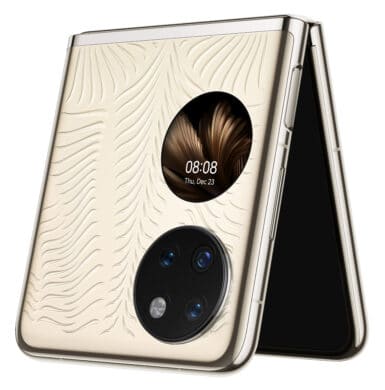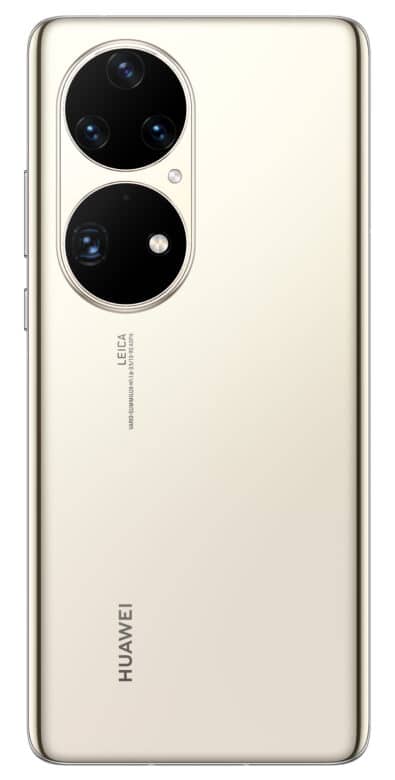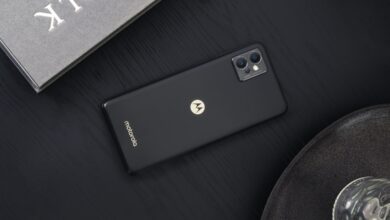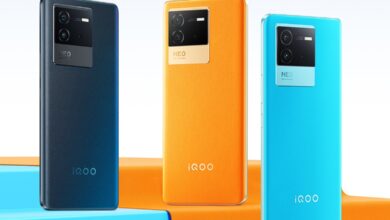
Huawei has introduced its new P50 series. The result is quite impressive in the form of the P50 Pro and the P50 Pocket. While the P50 Pocket comes along as a chic foldable, the Chinese company relies more on a classic design for its P50 Pro.
P50 Pocket modeled after the Galaxy Z Flip
It is hardly surprising that Huawei is launching the P50 Pocket. After all, the foldable design has gained immense popularity since the success of the Samsung Galaxy Z Flip. The advantages of the foldable are quite obvious. For example, you get a display with a proud 6.8 inches and a resolution of 2,790 x 1,188 pixels in the opened mode. In contrast, it fits in every pocket when folded up. It is particularly important for such a device that you cannot tell that it is a foldable smartphone.

In particular, a visible gap between the top and bottom of the device can leave a bad impression. The P50 Pocket manages to get around this blunder. The reason for this is said to be the very special hinge that the Chinese manufacturer uses here. Thus, Huawei skillfully eliminates the Achilles’ heel of the Galaxy Z Flip 3. After all, the hinge is still visible on the latter. In addition to the main screen, the P50 Pocket also has a second screen that is mainly used for status messages. This measures just over 1 inch.
With a handicap on the western market
It will certainly not be new to you either that Huawei has an exceedingly hard time on the Western market. That wasn’t always the case. After all, just a few years ago, the electronics company was one of the toughest competitors of Samsung and other smartphone giants. Now, other Chinese companies like Xiaomi have been able to fill the gap left by Huawei. But how did this happen? The reason is Huawei’s place on the dreaded embargo list. This not only ensures that selling the devices in the United States of America is prohibited. On top of that, US companies are not allowed to work with Huawei, which has serious consequences. The Android operating system from Google is not allowed to run on Huawei smartphones or tablets.

However, Huawei skillfully gets around the lack of Android by using the Android Open Source Project. The lack of 5G is probably the biggest compromise that buyers of the foldable smartphone have to make. Huawei installs an extremely powerful processor in the form of the Qualcomm Snapdragon 888. However, it does not offer 5G. The Chinese manufacturer would certainly have liked to equip its P50 Pocket with the mobile standard that has now even arrived in mid-range smartphones. However, the US embargo also puts a stop to that. After all, Huawei’s devices are only allowed to be sold with LTE in our climes.
Memory expansion possible
Huawei offers the possibility to expand the memory with its P50 Pocket, which is anything but standard by now. Rather, there are only very few manufacturers that still offer a memory expansion. Since the foldable is available with either 256 GB flash storage and 8 GB RAM or 512 GB flash storage and 12 GB RAM, very few will need a storage expansion. In terms of camera technology, Huawei used to be considered the blocking leader among smartphone manufacturers. Accordingly, every new device puts a bit of pressure on the Chinese company’s shoulders to succeed.

The P50 Pocket comes with a camera module consisting of three different lenses. In addition to the main camera (40 megapixels), this offers an ultra-wide-angle lens (13 megapixels) as well as an ultra-spectrum lens (32 megapixels). If you open the device, you will also see the obligatory selfie camera. It is supposed to have a resolution of 10.7 megapixels. The 4,000 mAh battery is supposed to provide good endurance. Unfortunately, it cannot be charged wirelessly. However, Huawei promises a charging power of up to 40 watts.
P50 Pro with a lot of power
If you take a look at China, the presentation of the P50 Pro should not have been too surprising for Huawei fans in this country. After all, the flagship has been available for purchase in the Middle Kingdom since last summer. Although it looks quite different from the foldable, there are also similarities. Both smartphones are equipped with the Qualcomm Snapdragon 888.

Accordingly, the P50 Pro also does not offer 5G in this country. The storage equipment also looks similar. In addition to 256 GB of flash storage, there is 8 GB of RAM. A storage expansion is also possible here. With a size of 6.6 inches, the chic OLED screen should be sufficient for most users. The resolution of 2700 x 1228 pixels is supposed to ensure sharp pictures. To ensure that they flicker smoothly across the screen, there is a rich 120 Hz refresh rate.
Uniform design language
If you take a look at the camera module of the two smartphones, you will quickly notice that it is a family of devices. After all, Huawei seems to have paid meticulous attention to a design language here. The connecting element is clearly the camera module. Although the P50 Pro comes with four instead of three lenses, it is also circular. The quad camera consists of a main camera (50 megapixels), a telephoto lens (64 megapixels), an ultra-wide-angle lens (13 megapixels) and a monochrome camera (40 megapixels). However, pure hardware has long since ceased to play a major role in smartphone cameras. At the latest with the market launch of the Google Pixel, the importance of software-based post-processing became clear. You can make up for a lot here. It is therefore hardly surprising that Huawei provides its flagship with a suitable software.

Features such as “Huawei XD Optics” and “XD Fusion Pro Image Engine” are designed to get the most out of every photo. The focus is supposed to be on making all four cameras work together as effectively as possible. Of course, the P50 Pro does not do without a suitable selfie camera. It has a resolution of 32 megapixels. The software of the P50 Pro follows the same path as its sibling in the foldable design. Android Open Source Project is also used here. The battery capacity of 4,360 mAh is a bit better. The P50 Pro can also be charged wirelessly. Those who charge conventionally via cable can charge with a maximum power of 66 watts. Thus, Huawei’s latest flagship should be fully operational again very quickly.
Questionable pricing policy
Considering that both upcoming smartphones neither offer Google service nor 5G support, one can only stumble when looking at the prices. Despite the sensitive drawbacks, both devices come with horrendous prices in the four-digit range. You have to pay at least 1,199 Euros for the Huawei P50 Pro. The P50 Pocket is even more expensive with an MSRP starting at 1,299 Euros. It is really questionable what Huawei’s goal is with these utopian prices.



No replies yet
Neue Antworten laden...
Neues Mitglied
Beteilige dich an der Diskussion in der Basic Tutorials Community →